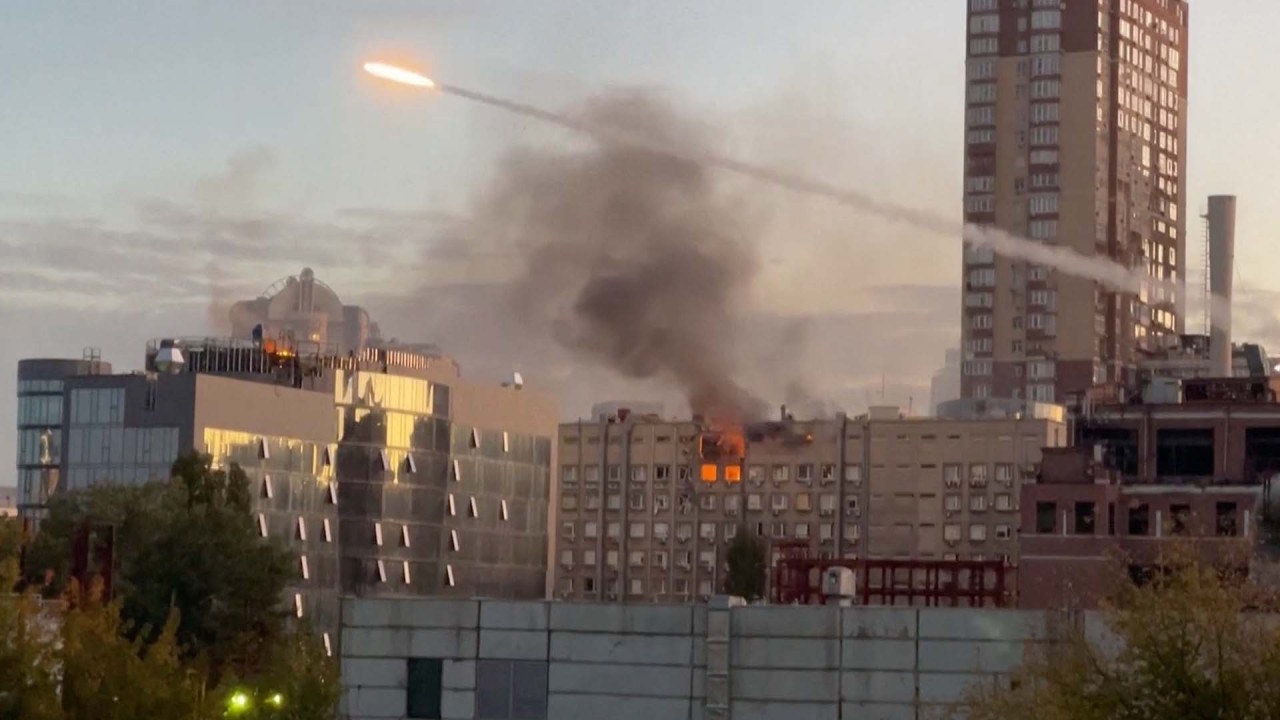
Ukraine war: Chinese knock-off parts used in Russia’s Iran-made suicide drones, report says
- The Shahed-136’s engine, for example, appears to be built by a Beijing firm copying a German design, researchers say
- The extent of China’s involvement in Iran’s drone manufacturing is not clear; Western parts have also been found in the weapons
Iranian-made suicide drones that Russian forces have slammed into Ukrainian cities appear to contain Chinese knock-offs of Western parts, researchers have found.
Over the last two months, Russian forces have been relying on Iran’s explosive Shahed-136 drone systems to hit Ukraine’s critical infrastructure in an ongoing terror blitz across the country.
According to a new report from the Institute for Science and International Security, these weapons appear to be built using Chinese parts that are based on Western designs.
Citing an open source review of available information, researchers found in their analysis published on Monday that the Shahed-136 drone uses an engine built by Beijing MicroPilot Flight Control Systems – which is a copy of an engine built by German company Limbach Flugmotoren.
Ukraine war: Iran agrees to ship missiles, more kamikaze drones to Russia
Iran has also designed its own parts that are based on these knock-off Chinese parts.
For example, the Shahed-131 drone – another drone used by Russian forces in Ukraine that is controlled by a remote operator and flown into a target and blown up – contains an engine built domestically in Iran, but it’s a reverse-engineered copy of another Beijing MicroPilot Flight Control Systems engine.
And this Chinese engine is based on a British design.
“China plays a larger role than previously assessed in enabling Iran to manufacture and supply drones to Russian forces. It appears that Chinese companies are supplying Iran with copies of Western commodities to produce UAV combat drones,” the researchers wrote in their report.
Spencer Faragasso, a research fellow at the Institute for Science and International Security, told Insider that China somehow obtained these Western designs, though it is unclear if they were acquired through a transaction or another method.
“What appears to be happening here is that China has taken the designs for these engines, indigenously produced them in China, and in some cases export these designs to Iran,” Faragasso said. “In other cases, the engines have been identified directly in Iranian kamikaze drones.”
The extent of China’s involvement in Iran’s drone-making capabilities, however, it not immediately clear. It is also unknown when specific Chinese parts arrived in Iran.
In addition to the Chinese parts and designs, researchers also determined that Iran’s Shahed-136 and Mohajer-6 – a different drone that Tehran has supplied to Moscow – contain parts made in the US and Europe.
‘Suicide drones’ vie for supremacy over Ukraine
Last week, The Wall Street Journal reported that Ukrainian investigators had managed to inspect downed drones and found Western-made parts that help to steer, power, and guide the weapons.
Faragasso said this highlights a need for customs officials, governments, and businesses to practice vigilance in that distributing commercial products that have military applications.
“Discovering Iranian procurement networks can start with the Western suppliers, who would be expected to cooperate with authorities,” researchers wrote in their report.
“From there, authorities need to systematically expose Iran’s procurement network, identifying trading companies, distributors, shipping companies, agents friendly to Iran, and ultimately those in Iran organising these purchases.”
Russian President Vladimir Putin has used the Shahed-136 to attack and terrorise Ukrainian cities far from the front lines in recent weeks, as his military faces setbacks on the battlefield.
These small systems are packed with explosives and can fly around like normal drones, but they’re actually long-range loitering munitions. This means they can hang around an area before being directed at a specific target, which they can fly into and detonate – leading people to refer to them as suicide or kamikaze drones.
Despite evidence from Western intelligence agencies, Russia and Iran have denied that Shahed-136 are being used in Ukraine. US officials confirmed last month that Russian officials travelled to Iran to learn how to use the weapons, and Iranian military personnel more recently travelled to occupied Crimea to help Putin’s troops operate the drones.


